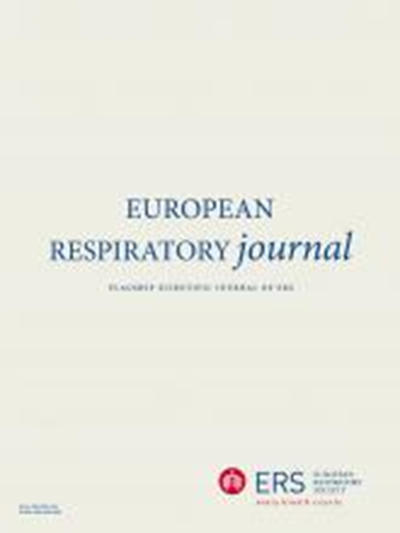De novo SRRM2 variants in neuroendocrine cell hyperplasia of infancy and persistent tachypnea of infancy.
IF 21
1区 医学
Q1 RESPIRATORY SYSTEM
引用次数: 0
Abstract
BACKGROUND Neuroendocrine cell hyperplasia of infancy (NEHI), also called persistent tachypnea of infancy (PTI), is a major cause of childhood interstitial lung disease. This rare lung disease is responsible for respiratory insufficiency in the first years of life. Non-pulmonary symptoms have also been reported, including failure to thrive and developmental delay. The pathophysiology of NEHI/PTI remains unclear. To identify candidate genes of NEHI/PTI, we performed whole genome and whole exome sequencing in a large cohort of deeply phenotyped patients. METHODS Trio whole genomes sequencing were performed (n=21) to identify a candidate gene. Following identification of a candidate gene, whole exomes sequencing wereas performed to screen this gene in the remaining NEHI/PTI patients (n=50). RESULTS Four de novo loss-of-function (LoF) variants of SRRM2 were identified in 4 out of 71 NEHI/PTI patients with typical pulmonary presentation. Serine/arginine repetitive matrix protein 2 (SRRM2) is involved in mRNA splicing, and LoF SRRM2 variants have recently been reported in patients with neurodevelopmental delay (NDD). All four NEHI/PTI patients also had mild NDD. The prevalence of SRRM2 LoF variants in our cohort (5.6%;95% CI: 1.6% to 13.8%) is 20 to 100 times higher than in reported patients with NDD without lung disease, therefore the phenotypic spectrum of SRRM2-associated disease should be extended to NEHI/PTI. CONCLUSION This study identifies SRRM2-related disorder as a monogenic cause of NEHI/PTI. These results suggest that NEHI/PTI patients should be evaluated by a paediatric neurologist and that SRRM2 sequencing should be included in every NEHI/PTI work-up.婴儿神经内分泌细胞增生和婴儿持续性呼吸急促的新生SRRM2变异。
背景:婴儿期神经内分泌细胞增生(NEHI),也称为婴儿期持续性呼吸急促(PTI),是儿童间质性肺疾病的主要原因。这种罕见的肺部疾病会导致生命最初几年的呼吸功能不全。非肺部症状也有报道,包括发育迟缓和发育迟缓。NEHI/PTI的病理生理机制尚不清楚。为了确定NEHI/PTI的候选基因,我们对大量深表型患者进行了全基因组和全外显子组测序。方法采用全基因组测序法(n=21)鉴定候选基因。在确定候选基因后,对剩余的NEHI/PTI患者(n=50)进行全外显子组测序以筛选该基因。结果71例NEHI/PTI患者中有4例发现4种SRRM2新发功能丧失(LoF)变异。丝氨酸/精氨酸重复基质蛋白2 (SRRM2)参与mRNA剪接,最近在神经发育迟缓(NDD)患者中报道了LoF SRRM2变异。所有4例NEHI/PTI患者也有轻度NDD。在我们的队列中,SRRM2 LoF变异的患病率(5.6%;95% CI: 1.6%至13.8%)比报道的无肺部疾病的NDD患者高20至100倍,因此SRRM2相关疾病的表型谱应扩展到NEHI/PTI。结论本研究确定srrm2相关疾病是NEHI/PTI的单基因病因。这些结果表明,NEHI/PTI患者应由儿科神经科医生评估,SRRM2测序应包括在每次NEHI/PTI检查中。
本文章由计算机程序翻译,如有差异,请以英文原文为准。
求助全文
约1分钟内获得全文
求助全文
来源期刊

European Respiratory Journal
医学-呼吸系统
CiteScore
27.50
自引率
3.30%
发文量
345
审稿时长
2-4 weeks
期刊介绍:
The European Respiratory Journal (ERJ) is the flagship journal of the European Respiratory Society. It has a current impact factor of 24.9. The journal covers various aspects of adult and paediatric respiratory medicine, including cell biology, epidemiology, immunology, oncology, pathophysiology, imaging, occupational medicine, intensive care, sleep medicine, and thoracic surgery. In addition to original research material, the ERJ publishes editorial commentaries, reviews, short research letters, and correspondence to the editor. The articles are published continuously and collected into 12 monthly issues in two volumes per year.
 求助内容:
求助内容: 应助结果提醒方式:
应助结果提醒方式:


